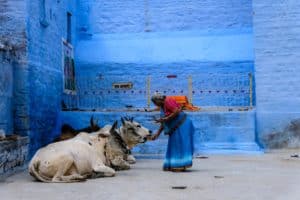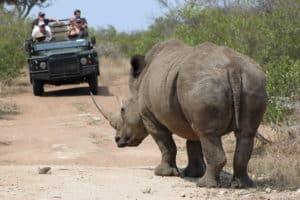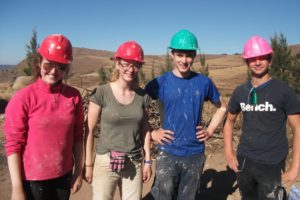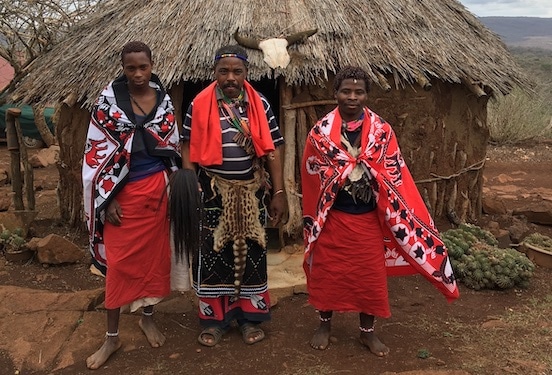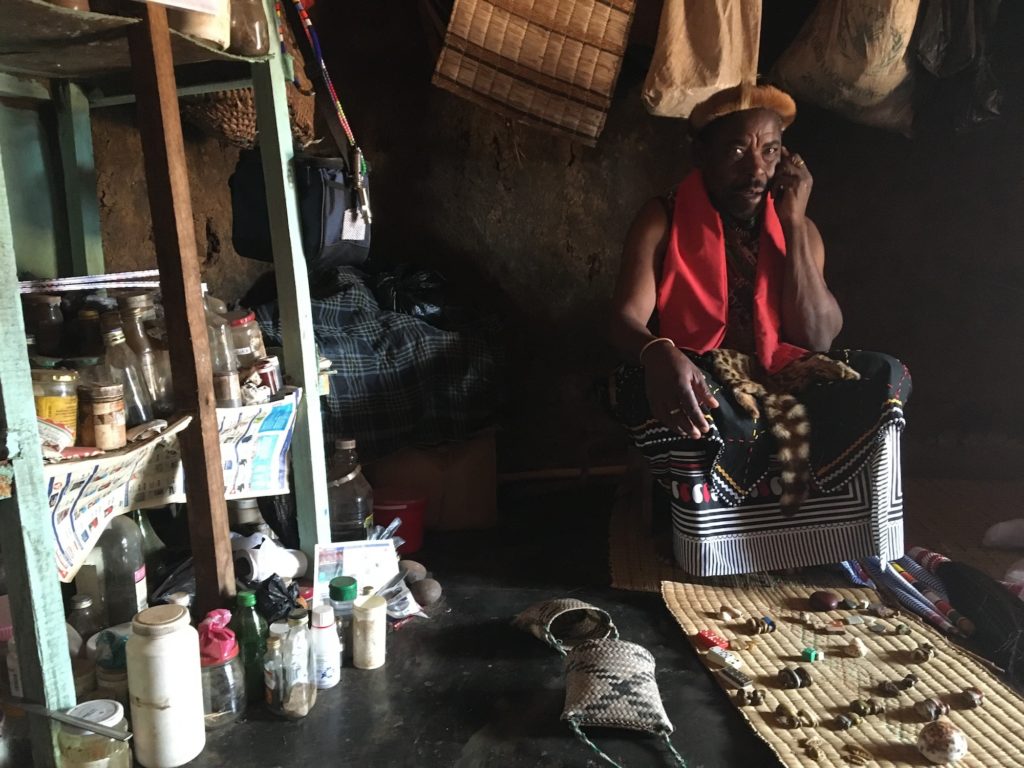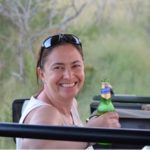Visit a Sangoma! I took my shoes off, clapped three times and put a coin on the ground. I then entered into the gloomy but welcoming coolness of the traditional healer’s mud hut. A visit to a sangoma is a special day. We all sat down in front of Jeluga, one of the sangomas of the Shewula community. Nobody said a word – we were rather in awe of the apparition that sat before us. Jeluga was sitting in his refinery of traditional dress, sporting an incredible head gear of feathers and beads and holding a switch that resembled a zebra tail.
Inside a sangoma’s hut – Visit a Sangoma
Once I had grown accustomed to the dimly lit interior I began to take in my surroundings; jars of leaves and different coloured concoctions littered the floor with a few skulls of unidentifiable animals. There were bunches of leaves and twigs hung suspended from the ceiling and an enormous python skin circumnavigated the hut, it was an Aladdin’s grove of treasures.
Jeluga greeted us, in a serious manner, and we all smiled nervously and fidgeted as we sat down on the grass mats. He then took some snuff, snorted it, coughed and spluttered and then started to shake a a small purse, which rattled ominously. We were going to have the bones thrown for us.
It is a privilege to be invited into a traditional healer’s house. Sangomas or traditional healers are revered in Eswatini and 80% of the population will consult a traditional healer before a visiting a clinic. They are considered physicians, herbalists, prophets, priests and diviners, all rolled into one. Sangomas therefore have a a great deal of responsibility within the community. So traditional healers are often very busy people and I was grateful that Jeluga had put time aside for our visit.
How to become a sangoma
First Jeluga kindly explained, through a translator, what his role was in the community and how he became a sangoma. A few years ago Jeluga had dreams calling him to be a sangoma, he was very ill and only when he started his training did he get better. I have known Jeluga since 2000, before his time as a sangoma. Over the years I have seen him become a really well respected and valued member of Shewula community. And here I was sitting in his hut with my guests, listening to his story.
He explained about how he was guided to each bone that he uses and that the bones for each sangoma are different; you can not use another sangoma’s bones. Once the bones had been thrown he would give advice or natural medicine. The hut had hundreds of jars filled with ground leaves, twigs, bark, bone or whatever the spirits had guided Jeluga to collect and prepare for future use. It is fascinating to listen to and a bit beyond the realm of comprehension. Jeluga communicates with his ancestors, and his ancestors communicate with the ancestors of his patient, who knows the patients issue and passes this information back down the line.
Throwing the bones
The bones were thrown on the mat and we all leaned forward in anticipation – not that we could ‘read’ the bones, but curiosity had over powered us. There on the mat were a couple of die, two dominoes, an assortment of vertebrae with different coloured wire around them, cowrie shells, toe bones complete with claws, some coins, glass beads, feathers and more bones of indiscriminate origin. Jeluga then moved some of the bones around, pointing out what they all were.
Most of the bones are in pairs, male and female, bones from leopard, tortoise, warthog, duiker. Each small bone, usually an ankle bone, were wrapped in different coloured wire to identify male and female. The dominoes represented elephant – ivory being the key there, it would be hard to get a small enough bone to throw! In order to read the bones the sangoma needs to look at the way the pairs of bones align and how they sit together or not.
What were his ancestors saying? Who knows, but it was an experience of a life time to visit a sangoma and an opportunity not to be missed. Contact us to book your own adventure today!
